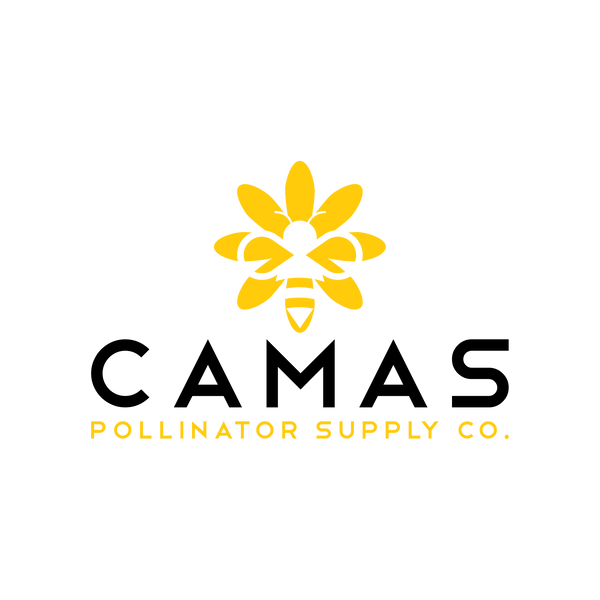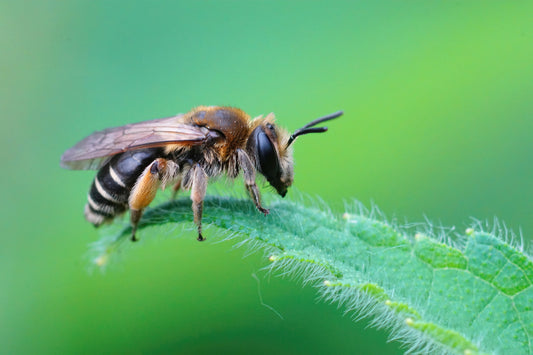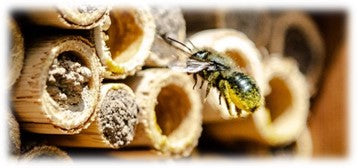
Have you ever watched your beautiful spring pollinator garden wither into a disappointing wasteland by mid-July? You're not alone if you've experienced the heartbreak of watching your carefully planned garden fail exactly when summer pollinators need it most, during the scorching heat when most plants give up.
I'll never forget the crushing disappointment three summers ago when my "pollinator paradise" turned into a barren landscape just as the peak pollinator season arrived. That's when I learned the hard truth: most gardeners choose summer bloomers based on pretty pictures, completely ignoring whether these plants can actually survive extreme heat while providing the consistent nectar sources that struggling pollinators desperately need.
The July Heat Crisis That's Starving Your Pollinators
Picture this devastating scenario: temperatures soar above 95°F for weeks, your carefully selected "summer bloomers" stop flowering or die completely, and hungry bees and butterflies desperately search for nectar sources during their most active period. Meanwhile, you're left wondering why your expensive pollinator garden investment has become a pollinator desert.
"Plant heat-tolerant native species" and "select drought-resistant varieties" aren't just gardening suggestions – they're survival strategies for both your plants and the pollinators depending on them. This was my lightbulb moment when I realized I wasn't thinking like a pollinator emergency manager, ensuring reliable food sources during climate extremes.
The statistics are sobering: temperatures above 100°F can reduce nectar production by up to 70% in non-adapted plants, while heat-tolerant native species actually increase nectar concentration during stress periods. When we plant heat-sensitive varieties, we're literally creating pollinator food deserts during the season when they need support most.
Three Critical Mistakes That Kill Summer Pollinator Support
1. Choosing Plants for Cool-Weather Performance
Most gardeners select summer bloomers based on spring garden center displays or photos taken during mild weather. Big mistake! "Test plant performance in extreme heat" and "verify drought tolerance ratings" should be your primary selection criteria, not peak bloom beauty.
What changed everything for me? I started choosing plants specifically for their worst-case scenario performance. Now I prioritize varieties that thrive in 100°F+ temperatures and maintain nectar production during drought stress.
2. Ignoring Regional Heat Adaptation
Here's what most garden guides won't tell you: a "heat-tolerant" plant from humid Georgia will fail miserably in arid Arizona, and mountain varieties often can't handle plains heat. "Select regionally-adapted cultivars" and "choose locally-proven varieties" are essential for summer success.
The solution? "Document local summer growing conditions" and connect with regional native plant societies for real-world performance data. I keep detailed records of which plants actually bloom during our hottest weeks, not just which ones look good in May.
3. Focusing Only on Continuous Bloomers
Most gardeners obsess over plants that bloom all season, completely missing the strategic value of sequential heat-adapted bloomers. But here's the secret: the best summer pollinator support comes from overlapping waves of different heat-tolerant species, not exhausted plants trying to bloom continuously through stress.
Your 5-Step Heat-Proof Summer Bloomer Strategy
After transforming my own garden and helping dozens of fellow pollinator enthusiasts survive brutal summers, here's my proven system for reliable summer pollinator support:
Step 1: Map Your Heat Zones
Before selecting any plants, document your garden's actual summer conditions. "Monitor soil temperature daily" and "track afternoon shade patterns" because these microclimates determine plant survival more than general zone ratings.
I use a simple soil thermometer and take photos at 2 PM during the hottest weeks. This real-world data reveals which areas need the most heat-tolerant plants and where you can risk slightly less adapted varieties.
Step 2: Choose Proven Heat Champions
Select plants with documented performance in extreme heat, not just general "summer bloomer" recommendations. My go-to heat-proof pollinator magnets include:
Early Summer Heat Survivors (June-July):
-
Purple Prairie Clover (Dalea purpurea): Thrives in 110°F temperatures while providing continuous nectar
-
Blanket Flower (Gaillardia pulchella): Native variety blooms through drought and extreme heat
-
Wild Bergamot (Monarda fistulosa): Heat-adapted native that outperforms garden varieties

Peak Summer Powerhouses (July-August):
-
Maximilian Sunflower (Helianthus maximiliani): Late-season bloomer that loves extreme heat
-
Aromatic Aster (Symphyotrichum oblongifolium): Drought-tolerant with late summer nectar abundance
-
Desert Willow (Chilopsis linearis): Tree-form bloomer for arid regions
The secret? "Plan heat-adapted bloom succession" means each wave of bloomers should be specifically selected for the temperature extremes they'll face during their peak flowering period.
Step 3: Implement Strategic Watering
Here's a technique that revolutionized my summer success: deep, infrequent watering that builds heat tolerance rather than dependence. "Schedule early morning irrigation" and "water deeply once weekly" create stronger root systems that survive heat stress.

For example, I water my heat-tolerant natives deeply every 10 days at 5 AM, allowing soil to dry between waterings. This builds drought tolerance while maintaining enough moisture for nectar production.
Step 4: Create Microclimate Protection
"Install afternoon shade structures" and "use mulch for soil cooling" to help even heat-tolerant plants perform better during extreme conditions. Strategic placement of taller heat-loving plants can create cooling microclimates for slightly less tolerant varieties.
My breakthrough came when I started thinking in layers: heat-loving tall plants (like Maximilian sunflower) protecting medium-height bloomers (like purple coneflower), with ground-hugging heat lovers (like trailing lantana) providing living mulch.
Step 5: Monitor and Adjust Performance
"Document bloom persistence during heat waves" and "track pollinator activity during extreme temperatures" to identify your most valuable heat-adapted varieties. This data guides future plant selection and helps you eliminate varieties that fail under pressure.
I photograph my garden weekly during July and August, noting which plants maintain blooms and attract pollinators during 100°F+ days. This real-world performance data is worth more than any catalog description.
Advanced Heat-Tolerance Strategies That Set Experts Apart
Sequential Heat Adaptation
Plant varieties with different heat tolerance levels in strategic locations. Your coolest microclimates can support moderately heat-tolerant plants, while your hottest areas get only the most extreme heat lovers. This maximizes bloom diversity while ensuring something always survives.
Soil Temperature Management
"Apply reflective mulch around plants" and "create thermal mass with stones" to moderate soil temperature swings. Plants with stable root zone temperatures produce more consistent nectar than those experiencing extreme temperature fluctuations.
Strategic Companion Planting
Group plants by water and heat needs rather than aesthetic combinations. Heat-loving, drought-tolerant natives planted together create supportive microclimates and reduce maintenance while maximizing pollinator resources.
The Results You Can Expect
- When you implement heat-adapted summer bloomer strategies, gardeners consistently report:
-
Pollinator activity remains high even during 100°F+ heat waves when neighboring gardens are empty
-
Plant survival rates increase dramatically during extreme weather events
-
Garden maintenance decreases because adapted plants require less intervention during stress periods
-
Overall, pollinator support improves as reliable nectar sources attract and retain beneficial insects throughout summer
Your garden becomes a crucial pollinator refuge during the challenging summer months when many other food sources fail.
Your Heat-Proof Action Plan Starts This Weekend
Ready to create summer pollinator support that actually works during extreme heat? Start by documenting your garden's hottest microclimates this week and researching regionally-adapted native alternatives to any struggling plants.
Order heat-adapted varieties for fall planting – fall establishment gives these tough plants the root development they need to handle next summer's heat stress.
What's your biggest summer heat challenge for pollinator plants? Share your experiences in the comments below – I read every comment and love helping fellow pollinator gardeners solve their specific climate challenges!




